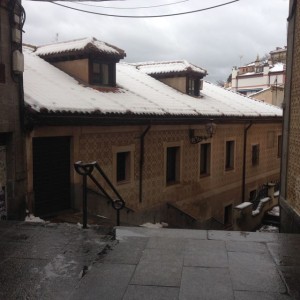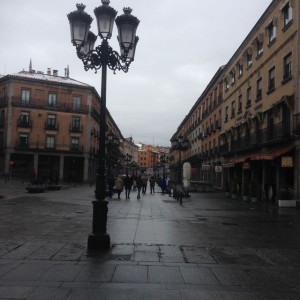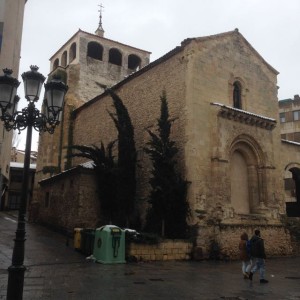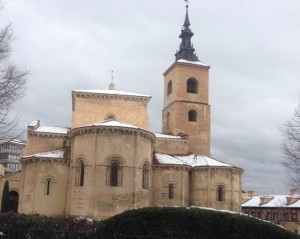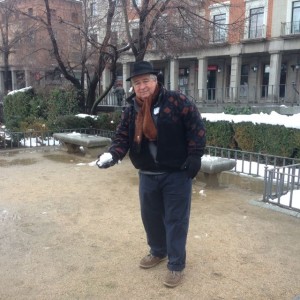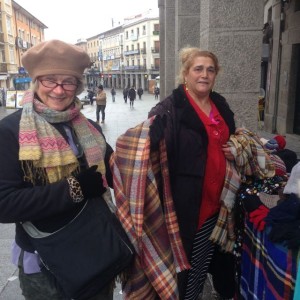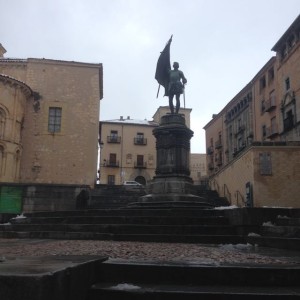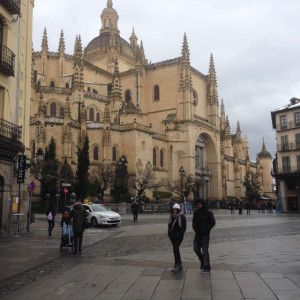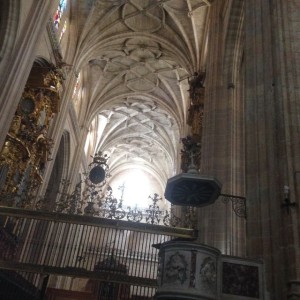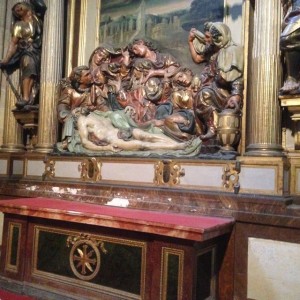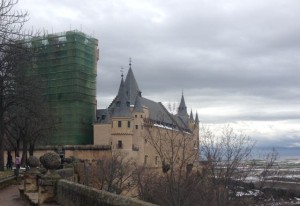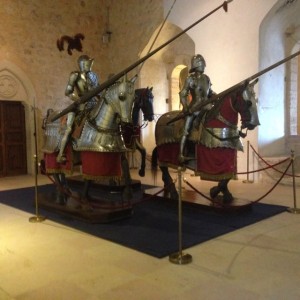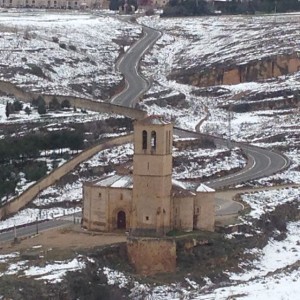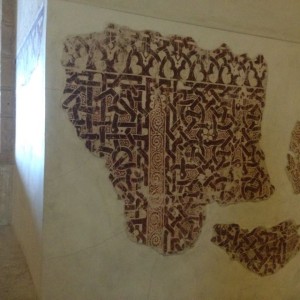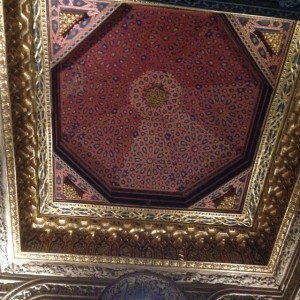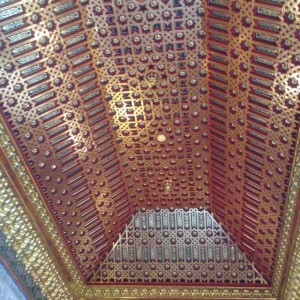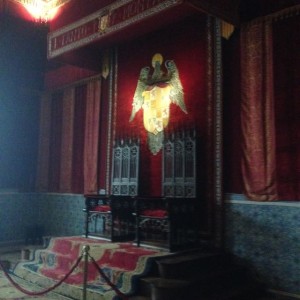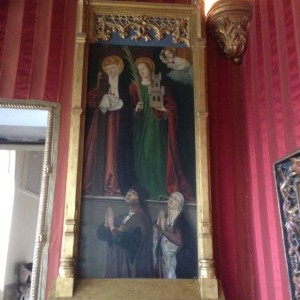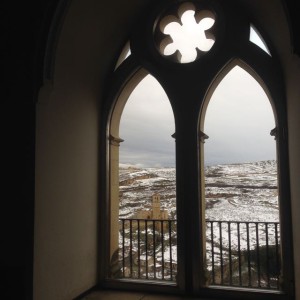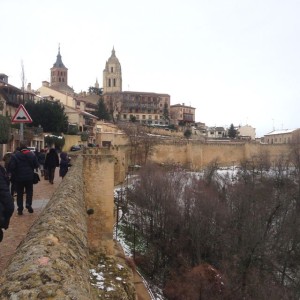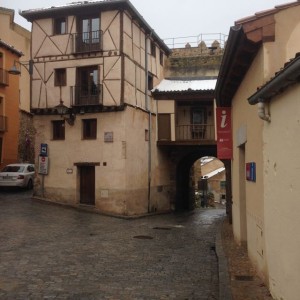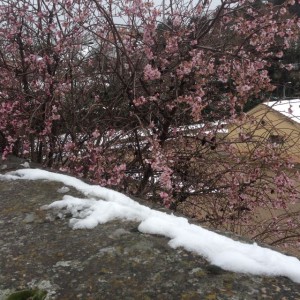Segovia is best known for its 2000 year old Roman aqueduct built at the end of the first century AD. The aqueduct, which is fifteen kilometers long and thirty meters high, uses no mortar. It was used to deliver water to the city until the end of the 18th century.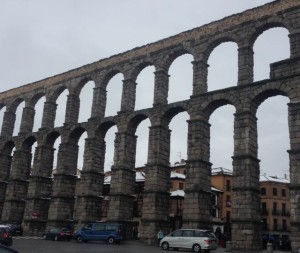
The snow had stopped when we reached Segovia, but cars and roofs were covered with snow and the streets were had patches of snow.
We had lunch in Meson el Codero across from ancient buildings. 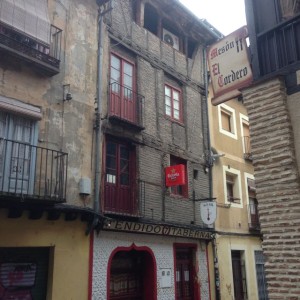
After lunch we walked down the main shopping street in Segovia,
where there were Romanesque churches on both sides of the street.
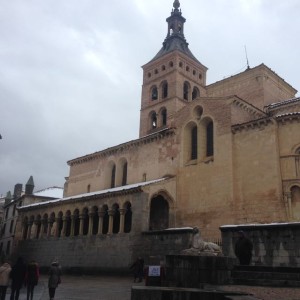 Church of St Martin, 12th century, with moorish influenced tower.
Church of St Martin, 12th century, with moorish influenced tower.
Juan Bravo, one of the leaders of the rebellion of common people (comuneros) against Charles V, who was a Hapsburg from Austria and did not even speak Spanish but inherited the Spanish throne because he was the grandson of Ferdinand and Isabella.
Cathedral of Santa Maria de Segovia built in the 16th century was the last Gothic cathedral built in Spain. It is called the lady of Spanish cathedrals.
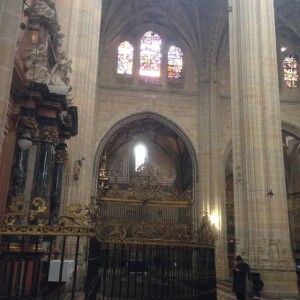 The cathedral is lined with private chapels built by wealthy families.
The cathedral is lined with private chapels built by wealthy families.
Next, we visited the alcazar (arabic for the castle).
Wood storks were building nests in the trees outside the alcazar.
King John II, father of Isabella, expanded the castle in the 15th century but the knight room dates back to the 12th century. It was a favorite castle of kings of Castile because it was impregnable.
This 12th cent. Romanesque church visible from the windows of the alcazar was built by the knights Templar (Crusaders) based on the Church of the Holy Sepulcher in Jerusalem.
Many of the workmen who built the castle were Moorish and the decorative styles of walls and ceilings echo Moorish designs.
The marriage of Ferdinand and Isabel unified unified the kingdoms of Spain. Phillip II, the last king to live in the castle, added the round towers after visiting the Netherlands. Phillip II was the son of Charles V, grandson of Ferdinand and Isabella, (part of Hapsburg dynasty from Austria) who inherited the throne and against whom the rebellion of the comuneros was fought but lost.
.
As we left the alcazar, we walked along the walls of Segovia.




